Kia Niro SUV (2016-2022) running costs and reliability
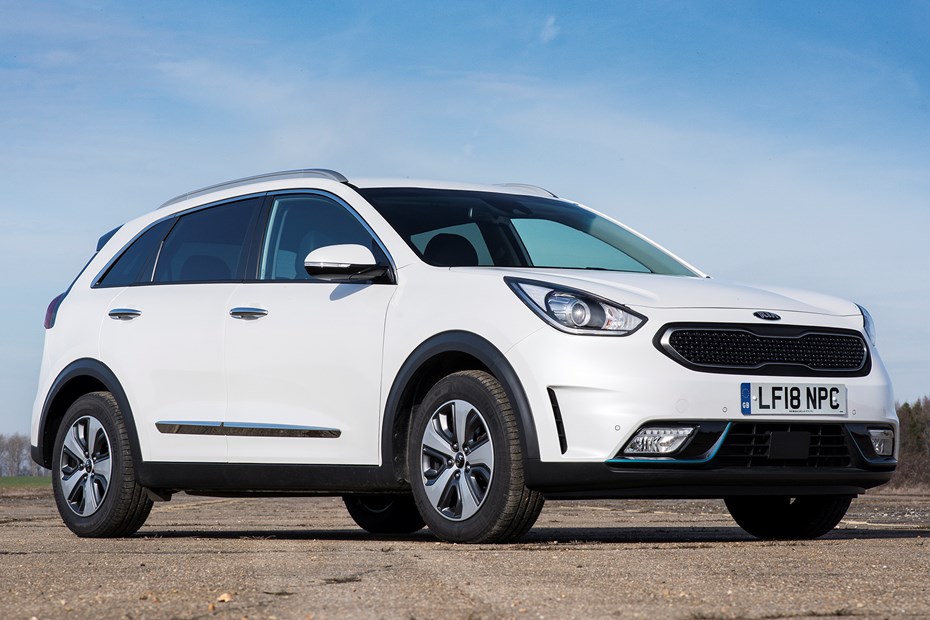
Miles per pound (mpp) ⓘ
| Hybrid petrol engines | 7.8 - 8.6 mpp |
|---|---|
| Plug-in hybrid petrol engines * | N/A |
Fuel economy ⓘ
| Hybrid petrol engines | 53.3 - 58.9 mpg |
|---|---|
| Plug-in hybrid petrol engines * | N/A |
- Particularly low fuel and tax bills for E-Niro
- Hybrids also claim impressive figures though
- Make sure you know a plug-in car work for you
Depending on the version you go for, the Kia Niro is either going to be fairly cheap to run, like the hybrid First Edition version with its 101g/km CO2 output and claimed 64mpg fuel economy, or astonishingly so. The E-Niro, once you’ve recovered from the purchase price, costs as much as it costs you charge the car, which at time of writing is nowhere near the price of a full tank of petrol or diesel.
And thanks to its 0g/km CO2 output, tax for private and company car drivers is low. The latter in particular sees BIK tax payable at 13% for the 2018/19 tax year, rising to 16% in the next year but then dropping to a measly 2% after that. So, while it may look like costs are rising, over three years it’s looking far cheaper than the other two Niro versions.
The next cheapest version for most users should be the plug-in hybrid model, but only if you actually use the plug. Otherwise it’s just a petrol SUV, and won’t be brilliant. It’s worth noting here that Kia doesn’t traditionally offer particularly good finance deals, so while a Niro may look like good value, often high interest charges may mean it’s not. Do the sums yourself and make sure you know what you’re in for.
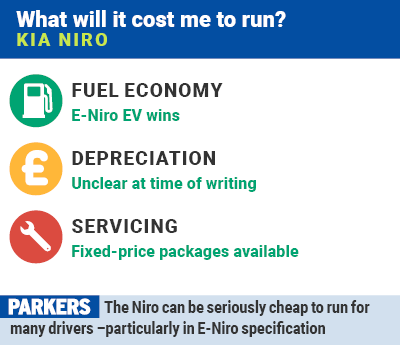
Kia E-Niro charging times
You’re able to charge the all-electric E-Niro to 80% battery life in 54 minutes using a 100kW fast-charger, while a 50kW unit will take 75 minutes to do the same. A home charge with a three-pin plug will take considerably longer, though – over 24 hours. Always ensure your lifestyle is set up for electric motoring, including the installation of a wallbox if needs be.

The Kia Niro’s credentials as an eco car are strong. The pure electric E-Niro is right at the vanguard, with zero tailpipe emissions to speak of. You do need to charge it with energy that may or may not be sustainable, but that’s changing quickly too and soon enough the biggest environmental issue with EV driving will be what to do with those batteries full of expensive rare metals.
Of the other two powertrains offered, the plug-in hybrid is cleanest with CO2 emissions of 29g/km – but that’s only the case if you plug it in and use it as intended. There’s a big problem at present with people buying plug-ins for the tax breaks and then not actually using the electricity, which completely defeats the object of the exercise.
- Nothing worrying to report
- No recalls by DVSA
- Kia has a good reputation
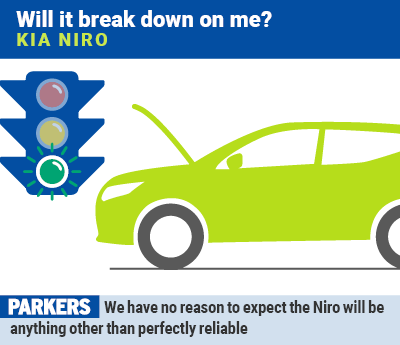
We think the Kia Niro’s reliability shouldn’t be a concern. It’s fundamentally a car using tried-and-tested parts, built by a company that has become known for its sturdy, dependable products.
We’ve only got one owners’ review on Parkers at time of publication, and this is a positive one, while we’ve heard of nothing anecdotal that could indicate a potential problem area. There have been no recalls by DVSA, either.
Ongoing running costs
| Road tax | £20 - £195 |
|---|---|
| Insurance group | 11 - 15 |
Get an insurance quote with

|
|






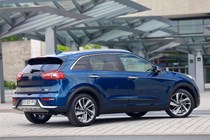


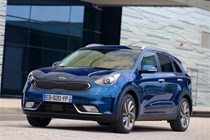
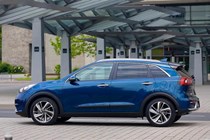
.jpg)
.jpg)
.jpg)
.jpg)
.jpg)
.jpg)
.jpg)
.jpg)
.jpg)
.jpg)
.jpg)
.jpg)
.jpg)
.jpg)
.jpg)
.jpg)
.jpg)
.jpg)
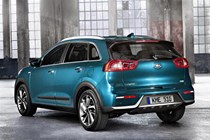

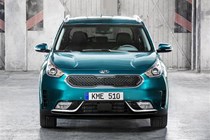
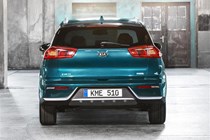
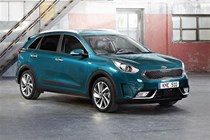



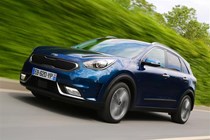
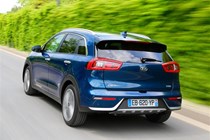
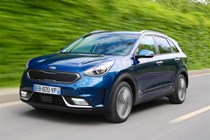
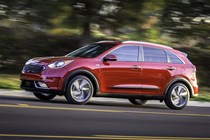

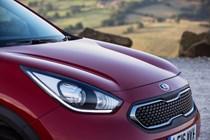
.jpg)
.jpg)
.jpg)
.jpg)
.jpg)
.jpg)
.jpg)
.jpg)
.jpg)
.jpg)
.jpg)
.jpg)
.jpg)
.jpg)
.jpg)
.jpg)
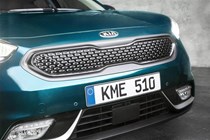
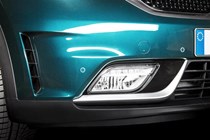
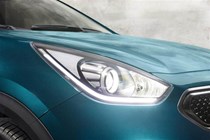
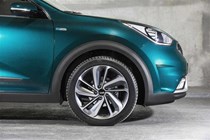








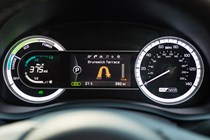
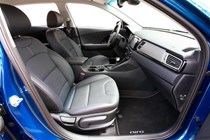
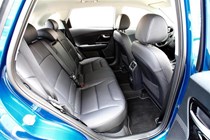
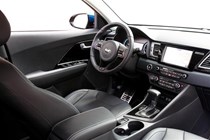

.jpg)
.jpg)
.jpg)
.jpg)
.jpg)
.jpg)
.jpg)
.jpg)
.jpg)
.jpg)
.jpg)
.jpg)
.jpg)
.jpg)
.jpg)
.jpg)
.jpg)
.jpg)
.jpg)
.jpg)
.jpg)
.jpg)
.jpg)
.jpg)
.jpg)
.jpg)
.jpg)
.jpg)
.jpg)
.jpg)
.jpg)
.jpg)
.jpg)
.jpg)
.jpg)
.jpg)
.jpg)
.jpg)
.jpg)

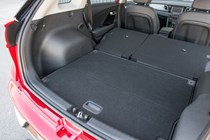

.jpg)

.jpg)
.jpg)
.jpg)
.jpg)
.jpg)

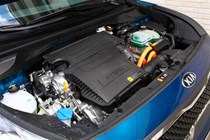
.jpg)
.jpg)
.jpg)
.jpg)
.jpg)
.jpg)









.jpg?quality=50)
.jpg?quality=50)
.jpg?quality=50)
.jpg?quality=50)
.jpg?quality=50)
.jpg?quality=50)
.jpg?quality=50)
.jpg?quality=50)
.jpg?quality=50)
.jpg?quality=50)
.jpg?quality=50)
.jpg?quality=50)
.jpg?quality=50)
.jpg?quality=50)
.jpg?quality=50)
.jpg?quality=50)
.jpg?quality=50)
.jpg?quality=50)














.jpg?quality=50)
.jpg?quality=50)
.jpg?quality=50)
.jpg?quality=50)
.jpg?quality=50)
.jpg?quality=50)
.jpg?quality=50)
.jpg?quality=50)
.jpg?quality=50)
.jpg?quality=50)
.jpg?quality=50)
.jpg?quality=50)
.jpg?quality=50)
.jpg?quality=50)
.jpg?quality=50)
.jpg?quality=50)

















.jpg?quality=50)
.jpg?quality=50)
.jpg?quality=50)
.jpg?quality=50)
.jpg?quality=50)
.jpg?quality=50)
.jpg?quality=50)
.jpg?quality=50)
.jpg?quality=50)
.jpg?quality=50)
.jpg?quality=50)
.jpg?quality=50)
.jpg?quality=50)
.jpg?quality=50)
.jpg?quality=50)
.jpg?quality=50)
.jpg?quality=50)
.jpg?quality=50)
.jpg?quality=50)
.jpg?quality=50)
.jpg?quality=50)
.jpg?quality=50)
.jpg?quality=50)
.jpg?quality=50)
.jpg?quality=50)
.jpg?quality=50)
.jpg?quality=50)
.jpg?quality=50)
.jpg?quality=50)
.jpg?quality=50)
.jpg?quality=50)
.jpg?quality=50)
.jpg?quality=50)
.jpg?quality=50)
.jpg?quality=50)
.jpg?quality=50)
.jpg?quality=50)
.jpg?quality=50)
.jpg?quality=50)



.jpg?quality=50)

.jpg?quality=50)
.jpg?quality=50)
.jpg?quality=50)
.jpg?quality=50)
.jpg?quality=50)


.jpg?quality=50)
.jpg?quality=50)
.jpg?quality=50)
.jpg?quality=50)
.jpg?quality=50)
.jpg?quality=50)